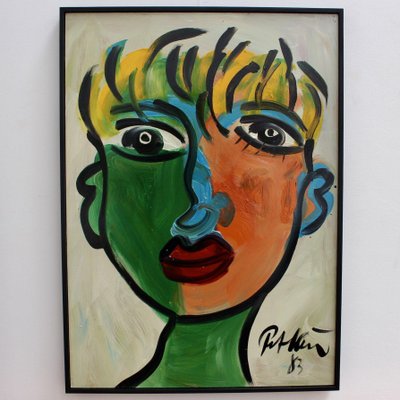

2003: The Sixties Peter Robert Keil, Kunstsinn Gallery, Nuremberg.2002: International Art Fair, Frankfurt.
 2001–2005: Intercontinental Hotel Berlin.
2001–2005: Intercontinental Hotel Berlin. 
2000: Exhibitions Paris, Amsterdam, London.1999: Höckner Gallery, Salzburg, Austria.1998: Aventura Art Gallery, Aventura, Florida, USA.

1993: Carousel Gallery, Dania, Florida, USA.
#Peter robert keil free
1986–1990: Free Art Exhibition, Berlin, Exhibition Hall, Berlin. 1962: First solo exhibition at the Art Gallery, London. In the past 50 years, he has created numerous large- and small scale paintings in oil and mixed media on canvas but also some sculptures in wood and steel and a great number of majolicas. His emotional way of painting is mainly driven by a desire for freedom from social constraints and conventions. Keil prefers to paint human figures, portraits, big city scenes, landscapes and still life images of flowers. In his paintings, the colour is applied with quick brushstrokes and occasionally with impasto techniques and the images are additionally abstracted by the use of Graffiti elements. Since then, the use of intensive to lurid colours and the absence of realistic representation have become characteristic of his painting style. Keil increasingly parted with his realistic approach and developed a new, much more spontaneous and dynamic painting style which he developed further during his years in London and finally during his time as one of the "Berliner Neue Wilden" at the beginning of the 80s. However, his style changed visibly at the beginning of the 60s when he lived in Paris for a while and emerged in the city's nightlife. In the works from his early Berlin years, he mainly focused on typical big city settings and characters on the fringes of society. In the beginnings of his artistic career, Peter Keil's style was influenced by German expressionism. Today he mainly lives and works in Zimmerau (Bavaria, Germany), Berlin and Los Angeles. From the early 60s on, Keil established studios in Paris, London, Berlin and in the US. During his time in Mallorca, he also met with Joan Miró in his studio several times. When the Berlin Wall was built, he lost contact with his mentor Otto Nagel and from the early 60s on, Keil started to spend more and more time abroad.ĭuring his studies at the University of Arts in Berlin, he came in contact with numerous other artists who later became influential artists of their generation, like for example Georg Baselitz, Eugen Schönebeck, Markus Lüpertz and Joachim Schmettau. In 1954, he began his traineeship as an artist metalworker and between 19, he studied at the University of Arts in Berlin. From 1954 on, the East Berlin-based painter Otto Nagel became his mentor and taught him first craft skills and painting techniques. This is where Peter Robert Keil grew up in the working-class neighbourhood of Berlin-Wedding and where he discovered his interest in painting-particularly in expressionistic artists and in Pablo Picasso's work. During the end phase of the war, Keil's mother, also an artistically talented woman, took her son and struggled her way to West Berlin where they settled. Peter Robert Keil was born to an artist blacksmith father whom he lost very early in his childhood during World War II.








 0 kommentar(er)
0 kommentar(er)
